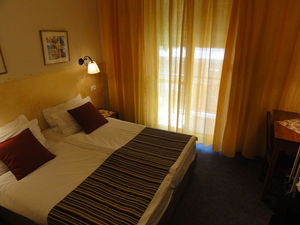To some, it would be called “Room Service.” For upscale and more meaningful service, here we will refer to it as IN ROOM DINING. This will require a blue print and a plan and extremely close coordination between kitchen and staff, a specific cadre of “servers”, front desk management who provide statistics as well as an estimated number of guests at any given time in the hotel, and administrative top management whose function it would be to allot pricing, surcharges as well as some special ordering of foods for various meals, late night snacks, as well as restocking for the mini-bars in most rooms. The ideal design will be ready and available to provide service to the Inn’s guests 24/7. The tallest building, and the simplest customer service operation, both require a solid foundation. “A service blueprint allows a company to explore all the issues involved in creating or managing a service” (Shostack 136). What is important to remember at this beginning stage opf managing a customer service operation is that everything cannot merely exist on paper: It has top be in the effectiveness of the customer service team.
So, for the purposes of this over view, I am the new manager of “in-Room Dining” for a major upscale hotel. In sketching out my blueprint for a successful operation, I need to focus on several; important elements.
(1) Past usage of in-room dining, broken down by time periods. That is, how many breakfasts were provided to guest rooms, howe many lunches, how many dinners, how many snacks in between, how many late-night meals or snacks.
(2) People- available or new hires needed. “To the customer, people are inseparable parts of many services” (Shostack 136). We are in the “people business.”- those guests we serve, those who prepare and those who serve. The customer service blue-print will have to be designed around people available and needed to perform the job of preparing and delivering guest needs on time. This means a chart and shifts, morning, afternoon, evening, late night and early morning. It will also require staffing for kitchen food preparation, and availability of staff in case of emergencies (someone ill, or a sudden unexpected influx of guests). There would need to be a “tip pool for each shift, with all servers sharing in the dollar amounts, added up weekly.
(3) Menu and pricing. Some guests want the same menu as would be available in our regular restaurant facilities. Some want, or require , special orders. A main menu and pricing needs to be established. Special items should also be available to be prepared if and when needed. During special times of the year when guests include families on vacation, a special children’s menu might be utilized. As for pricing, this requires close coordination with top management as to breakeven dollars, and what would be needed- in terms of numbers served and price ber service- to make a profit. A regulation about automatically adding a service charge (in lieu of optional tipping by guests) should be included.
(4) Amenities. The idea is to provide the greaest customer satisfaction and a fine impression of this Inn and its services. Therefore, in many cases, some sort of room amenities might be consider, including (but not limited to) the daily newspaper, a small bud vase of fresh flowers with each delivery, a coloring book for children, picture post cards, offering a pre-packaged meal for “on the road” for some guests. This in addition to the usual “mint-on-the-pillow” type of room amenities.
Perhaps most important is to build a team capable of correcting any and all errors, a team ready top work closely together to keep the good name of the Inn foremost in the minds of the guests. Just as manufacturers aim for “zero defects” in their operation, so the blueprint for In Room Dining service should aim at zero-errors, on-time, accurate friendly delivery and total guest satisfaction. This sort of blueprint cannot simply exist oin paper. It has to be engraved in the minds of everyone involved with this customer service.
WORK CITED:
Shostack, G. Lynn: “Designing Services that Deliver” Harvard Business Review






